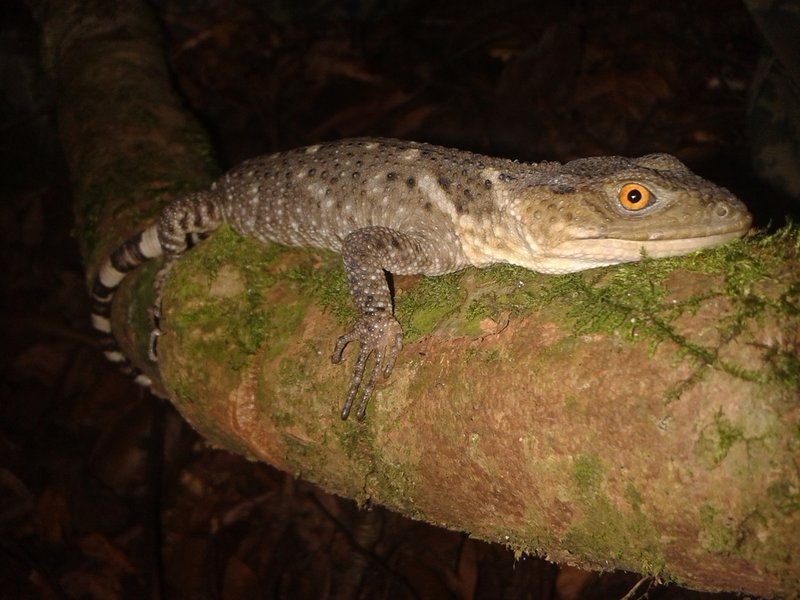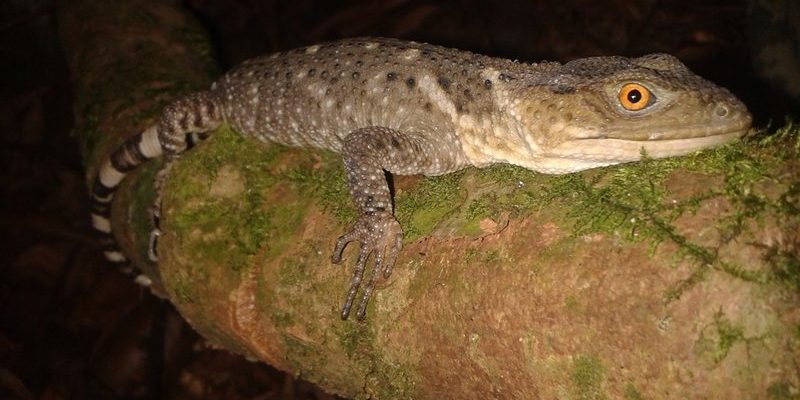
The world of reptiles is filled with fascinating creatures, and one of the more unique members is the Xenosaurus. Imagine a lizard that perfectly combines resilience and adaptability, making it a true marvel of nature. Xenosaurus, often found in the mountainous regions of Central America, particularly in Mexico, is not your average lizard. With its distinctive appearance and remarkable habits, it captivates the imagination and curiosity of anyone who learns about it.
These lizards are known for their exceptional climbing skills and unique coloration, which helps them camouflage in their rocky habitats. They possess strong limbs equipped with sharp claws, making it easier for them to navigate their rocky domains. But beyond their physical characteristics, understanding their behavior, diet, and environmental needs reveals just how remarkable these reptiles truly are. So, let’s dive deeper into the life of the Xenosaurus and discover what makes it so special.
Physical Characteristics of Xenosaurus
The Xenosaurus is not just another lizard; it has distinct features that set it apart from its relatives. Generally, these reptiles are medium-sized, ranging from about 6 to 12 inches in length. Their bodies are robust, often covered with a mix of scales that can come in various shades, including browns, greens, and grays, the perfect palette for blending into their rocky environments.
One of the most striking elements of the Xenosaurus is its head shape. It has a broad, flat head that complements its stout body. The lizard’s eyes are prominent, allowing for excellent vision, crucial for spotting both prey and predators. Their tails are also robust and somewhat flattened, which aids in balance as they navigate their treetop habitats. This design is a perfect example of nature’s engineering, where every feature serves an important purpose.
Additionally, Xenosaurus has a unique adaptation that many lizards do not possess: its specialized toes. These lizards have expanded toe pads that allow them to grip onto vertical surfaces easily. This adaptation is key for their climbing lifestyle, enabling them to scale rocks and trees with agility. In essence, every physical trait of the Xenosaurus is a testament to its evolution and environmental adaptations.
Habitat and Distribution
Xenosaurus predominantly inhabits the rugged terrains of Central America, particularly in Mexico, where it can be found in areas with plenty of rocky surfaces and vegetation. Specifically, they thrive in tropical and subtropical climates, favoring montane forests where elevation provides both humidity and shelter.
These lizards often seek refuge in crevices and under rocks during the day. Their choice of habitat is essential, as it offers both protection from predators and a bounty of climbing opportunities. In these rocky outcrops, they can easily find insects and other invertebrates to make up their diet.
Interestingly, the specific habitat of the Xenosaurus can affect its coloration. Those living in well-lit areas may develop brighter hues to blend in with the surrounding flora, while those in shaded regions tend to have darker tones. This ability to adapt color according to their environment is a fascinating survival mechanism.
Diet and Feeding Habits
The Xenosaurus is primarily insectivorous, meaning its diet mainly consists of insects. They’re known to feast on a variety of small invertebrates, including beetles, ants, and even spiders. Their sharp teeth are well-suited for gripping and consuming these critters efficiently.
During the daytime, Xenosaurus will venture out from its rocky crevices to hunt for food. They utilize their keen eyesight to spot movement among the foliage. Once they identify a potential meal, they can swiftly dart out and capture it. This hunting strategy showcases their agility and sharp reflexes, traits that are vital for survival in their natural habitat.
One point of interest is that Xenosaurus may also eat some plant material on occasion, though this constitutes a smaller part of their overall intake. This behavior is common among many reptiles, where they might supplement their diet with fruits or leaves when insects are less available. Such adaptability in diet highlights their resilience in varying conditions.
Behavior and Social Structure
Territoriality can play a role in their behavior as well. Males will often engage in displays of strength to ward off rivals. These displays can include puffing up their bodies or engaging in mock battles. Such interactions are all part of their natural instincts to secure their habitat and access to mates.
As night falls, Xenosaurus retreats to its hiding spots, becoming less active. During these nighttime hours, they often rest and digest their food, preparing for the next day’s activities. This lifestyle is typical for many reptiles, providing a balance that maximizes their energy efficiency.
Conservation Status
The conservation status of Xenosaurus varies depending on the specific species. Many are not currently classified as endangered, but habitat loss poses a significant threat to their populations. Deforestation and urbanization have led to a decline in their natural habitats, making it essential to monitor their populations and implement protective measures.
Conservation efforts are crucial to safeguard their habitats from further degradation. Education and awareness about these unique reptiles can foster interest in their preservation. For example, involving local communities in conservation initiatives often yields positive results, as people learn the value of preserving biodiversity.
Furthermore, as we continue to learn more about the ecological roles that Xenosaurus plays, we can advocate for more effective conservation strategies. Protecting their habitats not only benefits Xenosaurus but also supports the rich tapestry of life in their ecosystems.
Interesting Facts About Xenosaurus
| Scientific Name | Xenosaurus |
| Size | 6 to 12 inches long |
| Habitat | Montane forests in Central America |
| Diet | Insects and some plant material |
| Lifespan | 5 to 10 years in captivity |
Xenosaurus is a prime example of nature’s ingenuity, showcasing how adaptation allows species to thrive in specific environments. From their unique physical characteristics to their fascinating behaviors, these lizards are more than just simple reptiles—they are an integral part of their ecosystems. By learning about and appreciating creatures like the Xenosaurus, we can foster a greater respect for biodiversity and the need to protect these remarkable animals.
FAQ
What is the average lifespan of a Xenosaurus?
The average lifespan of a Xenosaurus can vary, especially depending on environmental conditions and threats. In captivity, these lizards can live anywhere from 5 to 10 years. In the wild, their lifespan may be shorter due to predation and habitat challenges, but they can still reach remarkable ages under the right circumstances.
Are Xenosaurus lizards good pets?
While they may be fascinating, Xenosaurus lizards are not commonly kept as pets. Their specific environmental needs and specialized diet make them more challenging to care for compared to more common lizard species. If you’re considering a reptile as a pet, it’s essential to do thorough research and understand their requirements.
How do Xenosaurus reproduce?
Xenosaurus lizards reproduce through internal fertilization, with males courting females during the breeding season. After mating, females will lay eggs in hidden locations, providing some protection from predators. The eggs are then left to develop on their own until they hatch, typically in a few weeks.
What do Xenosaurus lizards eat in the wild?
In the wild, Xenosaurus primarily feeds on insects such as beetles and ants. They may also consume smaller invertebrates and occasionally some plant material. Their diet can vary based on food availability in their environment, showcasing their adaptability.
Where can I find Xenosaurus in the wild?
You can find Xenosaurus lizards in the rocky mountainous regions of Central America, particularly in Mexico. They thrive in tropical and subtropical forests, often seeking refuge in crevices and under rocks during the day.
How do Xenosaurus protect themselves from predators?
Xenosaurus lizards use their natural camouflage as a primary means of protection from predators. Their coloration allows them to blend seamlessly into their rocky habitats. Additionally, their ability to quickly retreat into crevices makes it challenging for predators to reach them.
Can Xenosaurus change color?
While Xenosaurus doesn’t have the same color-changing abilities as some other reptiles, their coloration can vary based on their environment. For example, those living in brighter areas may be more colorful, while those in shaded places may appear more subdued. This adaptation helps them blend into their surroundings.
What is the biggest threat to Xenosaurus populations?
The biggest threat to Xenosaurus populations is habitat destruction, particularly due to deforestation and urban development. As their natural habitats are altered or fragmented, these lizards face challenges in finding food and shelter. Conservation efforts are crucial to mitigate these threats.
Do Xenosaurus lizards have any natural predators?
Yes, like many reptiles, Xenosaurus lizards face threats from various predators, including birds of prey, snakes, and larger mammals. Their ability to hide and their camouflage are crucial for avoiding these predators, but they remain at risk in their natural habitats.
How do I contribute to the conservation of Xenosaurus?
Contributing to the conservation of Xenosaurus can start with educating yourself and others about their importance in the ecosystem. Supporting conservation organizations that focus on habitat preservation or participating in local efforts can make a difference. Every small action counts in preserving these remarkable creatures and their habitats.

